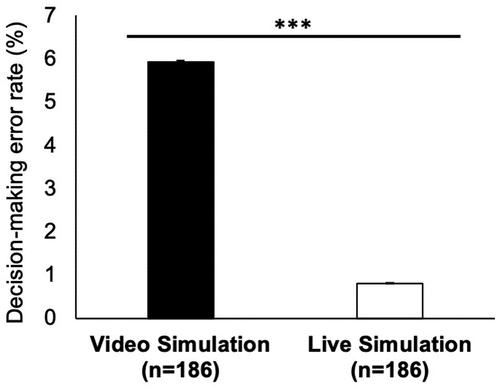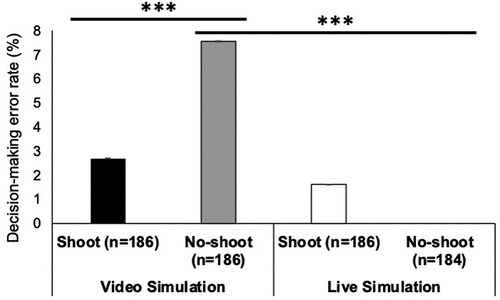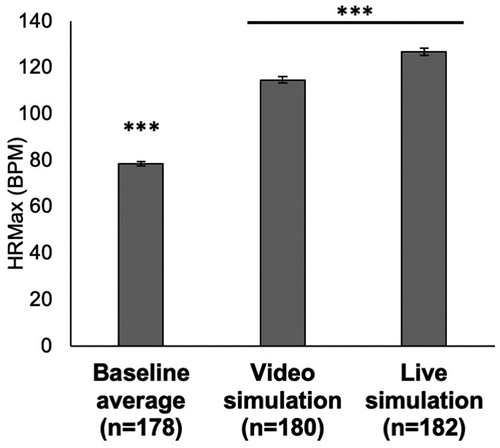Figures & data
Figure 1. Police lethal force error rates during video and live simulations. When averaging across multiple scenarios and use of force decision types (i.e., shoot/no-shoot), officers made significantly more decision-making errors during video simulations relative to live simulations. Error bars show SEM.

Figure 2. Police lethal force error rates by decision type during video and live simulations. within the video simulation condition, officers made significantly more decision-making errors during no-shoot scenarios (grey bar) relative to shoot scenarios (black bar). Lethal force error rates did not differ between live simulation decision types, with no errors made by any officers in a no-shoot scenario responding to an individual in mental crisis. Error bars are extremely small, reflecting low variability in error rates, and are plotted to show SEM.

Table 1. Video and live simulation error rates. All 187 participants performed the video and live simulations as part of their agency’s annual use of force requalification day. Eight behavioral data points were missing due to facilitators not recording a score. The number of observations included in error rate calculations are indicated for each simulation condition (video, live) and individual scenario.

